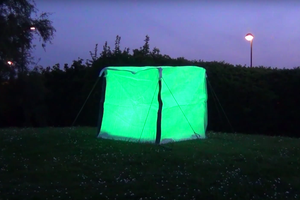WHY KiT?
Communicating by phone, text, or videochat is great, but the setup time can be prohibitive to short, quick interactions that make in-person interaction so meaningful. Modern long-distance relationships, whether with a significant other, friends or family, lack the tactility and physicality of having a loved one nearby. While this project is unable to replace the void of their absence, KiT hopes to make the other person seem a little closer.
KiT is unique in its use of touch and color. While there are many applications for messaging and talking to another person (ranging from texting to videochat), each of them requires a significant amount of setup time that makes it more difficult to just share an emotion or random thought.
By reducing the User Interface to the bare minimum, we are able to create and send a touch in seconds. Why send a text to tell how you're feeling when you can SHOW it, much faster and easier than sending a text or starting a phone call.
KiT has the potential to be world-changing for the people who are struggling in long-distance relationships by removing some of the impediments to communication. Despite the connectivity of the Internet, our personal lives seem to be growing more isolated, so KiT has the potential to make the world just a little bit closer and more personal by improving relationships.
WHAT IS A TOUCH?
A Touch is a certain color that you would like to send to your partner. You can decide on the meaning yourself, but here are some examples:
- RED: This can reflect your burning passion, or simply that it's not a good time to talk
- GREEN: This can show it's a good time to talk on the phone.
- BLUE: I'm feeling down
USER INTERFACE
Inputs: The input is very limited by design. There are three points of interaction: two knobs and a button. The knobs control the color that you are sending (using HSV color selection, with V set to a constant), and the button sends the selected color. The knobs are affixed to potentiometers, which are read by the ADC in the ESP8266 (after passing through an analog MUX.
Outputs: The only output is a RGB LED driven by the ESP8266.
Communication: For simplicity in constructing this prototype, the ESP8266 will just push its data to a MQTT server. The paired KiT will monitor the partner's MQTT stream and update whenever a new Touch is sent.
 drewrisinger
drewrisinger
 Mehrdad Majzoobi
Mehrdad Majzoobi
 Owen Trueblood
Owen Trueblood

 Charles Yarnold
Charles Yarnold